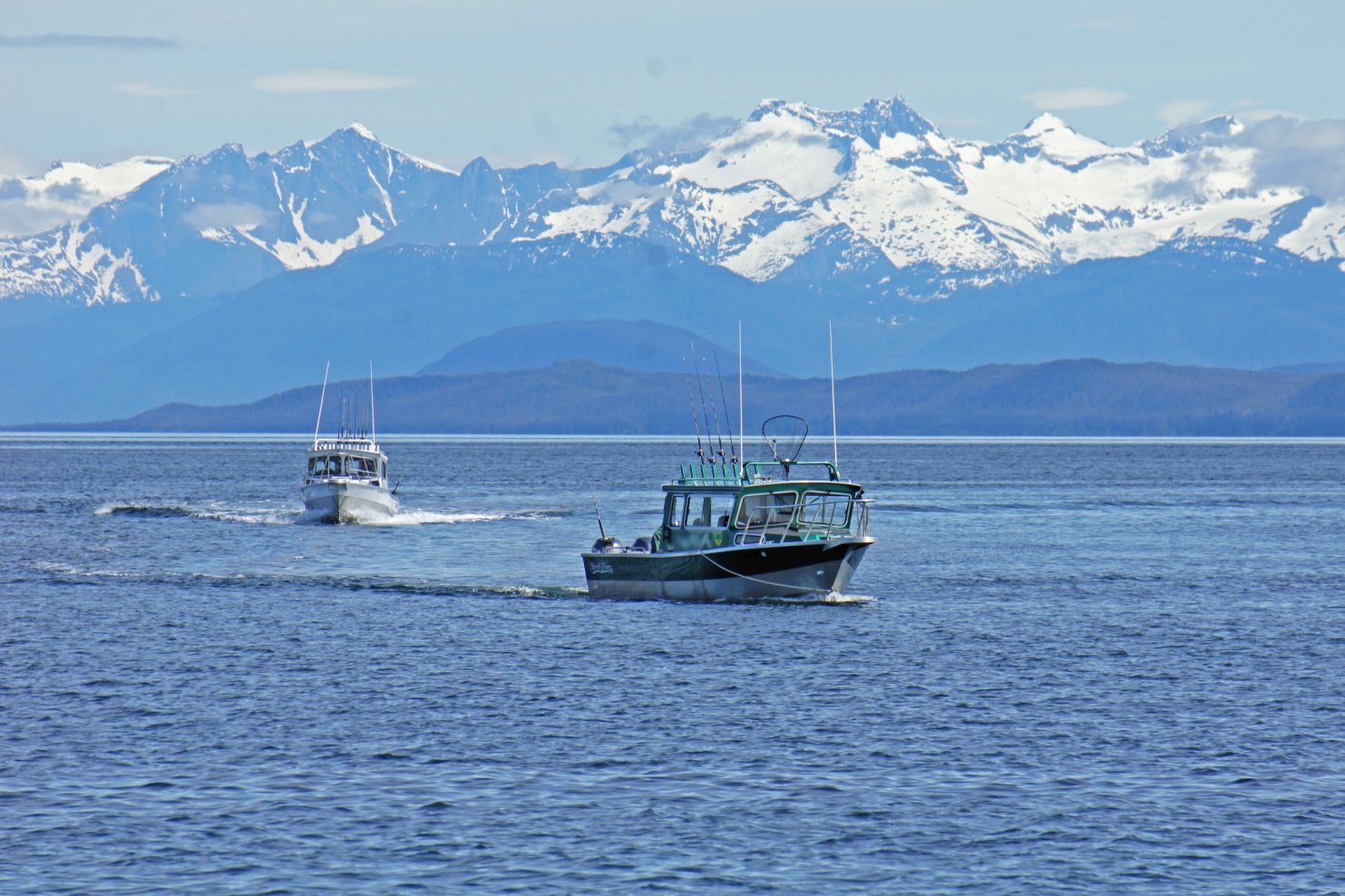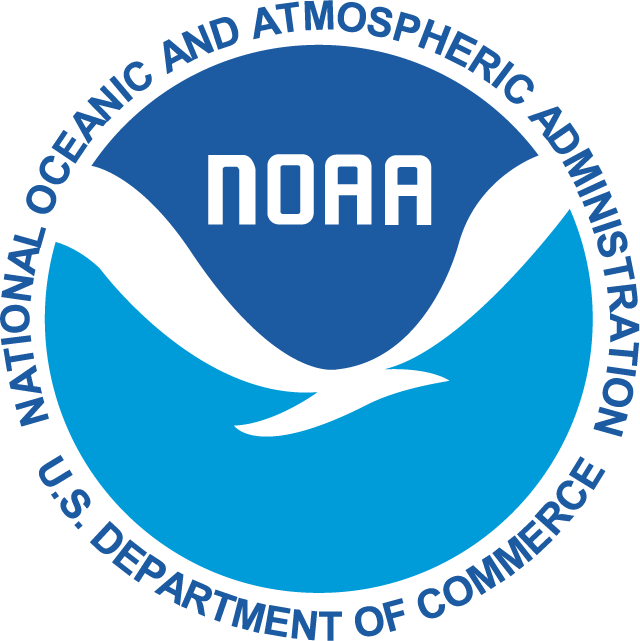Alaska Halibut Catch Sharing Plan Survey
Alaska Halibut Catch Sharing Plan Survey
Halibut_CSP_survey_2014_07_31_final
Alaska Halibut Catch Sharing Plan Survey
OMB: 0648-0705
Your Opinions About GAF
in the Halibut Catch Sharing Plan

Photo credit: R. Yamada
This survey is funded by the National Oceanic and Atmospheric
Administration, a U.S. government agency charged with management of
federal fisheries.

Public reporting burden for this collection of information is estimated at 30 minutes, including time for reviewing instructions, reviewing existing data sources, gathering and maintaining the data needed, and completing and reviewing the collection of information. Send comments regarding this burden estimate or any other suggestions for reducing this burden to Dan Lew, NOAA Fisheries, Alaska Fisheries Science Center, [email protected]. Notwithstanding any other provision of the law, no person is required to respond to, nor shall any person be subject to a penalty for failure to comply with, a collection of information subject to the requirements of the Paperwork Reduction Act, unless that collection of information displays a currently valid OMB Control Number.
OMB Control No: 0648-XXXX
Expiration Date: XXXX
We are seeking your opinions about the recently implemented Halibut Catch Sharing Plan (http://alaskafisheries.noaa.gov/frules/78fr75844.pdf). Please answer all questions as best as you can.
SECTION A: Your Views on the Catch Sharing Plan
A1 A main purpose of the Catch Sharing Plan (CSP) is to establish how much of the total allowable catch of Pacific halibut is allocated between the recreational charter and commercial fisheries. In general, how positively or negatively do you view the CSP as a whole?
Very positively
Somewhat positively
Neither positively nor negatively
Somewhat negatively
Very negatively
A2 The CSP allows charter halibut permit (CHP) holders to lease Individual Fishing Quota (IFQ) from commercial fishermen holding quota shares for Pacific halibut. When leased, the IFQ, which are measured in pounds, are converted to guided angler fish (GAF) using an area-specific conversion factor based on the previous year’s average weight of GAF. (CHP holders owning commercial IFQ may convert a portion of their IFQ into GAF as well.) GAF can be used by charter clients to harvest up to two fish of any size per person per day, regardless of charter-specific bag and size limits.
In general, how positively or negatively do you view the GAF component of the Catch Sharing Plan?
Very positively
Somewhat positively
Neither positively nor negatively
Somewhat negatively
Very negatively
A3 How positively or negatively do you believe the ability to use GAF will affect your business?
Very positively
Somewhat positively
Neither positively nor negatively
Somewhat negatively
Very negatively
Please explain your answer: ________________________________________________
________________________________________________________________________
SECTION B: Your Participation in the GAF Lease Market
B1 Did you lease GAF during 2014?
 Yes Continue to the
next question (B2)
Yes Continue to the
next question (B2)
No What were your main reasons for not leasing GAF during 2014? Please check all that apply.
Leasing GAF was too expensive
The leasing process was too difficult
My business did not need any GAF
I do not support the GAF leasing program
I did not want to conduct business with commercial fishing businesses
The program was too new and there was too much uncertainty
I did not know about the GAF leasing program
 Other (please specify): _____________________________________
Other (please specify): _____________________________________
Skip to question B10
B2 How many GAF did you lease during 2014?
_______ guided angler fish (GAF) during 2014
B3 Did you use a broker to facilitate the leasing of GAF?
Yes
No
B4 From whom did you lease GAF? Please check all that apply.
Someone I did not know personally prior to leasing
Someone I knew personally who held halibut IFQ (friend or family)
Myself (you hold both commercial IFQ and a CHP and leased to yourself)
B5 How difficult was the leasing process in general?
Not at all difficult
Somewhat difficult
Difficult
Very difficult
Extremely difficult
B6 Returns of unused GAF occur automatically 15 days before the end of the commercial fishing season or voluntarily before then (on or after September 1). During 2014, did you return any unused GAF?
Yes, I voluntarily returned unused GAF before the end of the season
Yes, my unused GAF was returned automatically
No
B7 In your lease agreement, was there a provision that allowed you to get a refund (or partial refund) for GAF that are unused and returned?
Yes
No
B8 How much of an impact, positive or negative, do you believe having GAF during 2014 had on your business?
Very positive
Somewhat positive
Neither positive nor negative
Somewhat negative
Very negative
B9 What were the main reasons you decided to lease GAF during 2014?
________________________________________________________________________
________________________________________________________________________
B10 Do you plan to lease GAF during 2015?
Yes
No
Don’t know
SECTION C: Guided Angler Fish (GAF) Restrictions
Under the current GAF leasing program, there are several restrictions on the use of GAF, including:
Single-season use. GAF must be used before the end of the season for which it is leased, with automatic returns if the GAF is unused by a certain date (15 days before the end of the commercial fishing season).
No transfers. GAF can’t be transferred between CHP holders during the season.
The restrictions listed above are features that are sometimes relaxed in other IFQ (or tradable permit) programs to increase flexibility for participants.
C1 How helpful, if at all, would relaxing each of the restrictions listed above be to you? Note that there are no proposals being considered currently for relaxing these restrictions, which may be administratively or politically infeasible under current laws and regulations. Even so, such changes could possibly occur in the future, and your opinion about them is valuable.
Restriction |
Not helpful at all |
A little helpful |
Somewhat helpful |
Very helpful |
Extremely helpful |
Single-season use……………………......... |
|
|
|
|
|
No transfers between CHP holders……….. |
|
|
|
|
|
C2 Relaxing single-season use. Multi-year leases would specify more than one year the GAF could be used (e.g., a two year lease would allow the GAF to be used in either the year it was leased or the following year). If multi-year leases of GAF were allowed next year, how would your participation in the GAF leasing market change? Assume all other program features remain the same.
I would lease more GAF than I currently planned
I would lease the same amount of GAF that I currently planned (no change)
I would lease less GAF than I currently planned
I don’t know
C3 Allowing transfers between CHP holders. If you were allowed to transfer a limited amount (up to a specific amount) of GAF to other CHP holders during the season starting next year, how would your participation in the IFQ leasing market change? Assume all other program features remain the same.
I would lease more GAF than I currently planned
I would lease the same amount of GAF that I currently planned (no change)
I would lease less GAF than I currently planned
I don’t know
SECTION D: What Programs Do You Prefer?
In this section, you choose which of several different leasing programs you like most and least. The options include the current leasing program (Option A), and several different options (Options B, C, and D) that relax one or more of the current GAF restrictions, but would result in a price increase above the GAF price under the current program. The prices listed for each option may be more or less than prices you have seen, but please use the ones presented in making your decision. Your opinion about these programs is important, even if some of the restrictions they relax may be currently administratively or politically infeasible.
D1 Consider options A and B below. Which one do you prefer? Please indicate your response below the table.
|
Option A Current leasing program |
|
Option B |
|
Length of lease period.………................
|
1 season only |
|
1 season only |
|
Ability to transfer to other CHP holders in-season………………………………… |
None |
|
Yes |
|
|
|
|
|
|
Price per GAF…………………………... |
$75 |
|
$100 |
|
Which option do you prefer? Check one box---------------------------> |
Option A
|
|
Option B
|
|
D2 For each option in D1, how many GAF would you lease if the regulations for only that option were in place next year? Assume the angler bag and size limits remain at current levels.
Number of GAF I would lease under this option……………….... |
Option A _____ |
|
Option B _____ |
|
D3 Again, here is the current leasing program and another option that relaxes the restrictions on GAF use, but results in a higher price for GAF. Which option do you prefer? Please indicate your response below the table.
|
Option A Current leasing program |
|
Option C |
|
Length of lease period.………................
|
1 season only |
|
1 or 2 seasons |
|
Ability to transfer to other CHP holders in-season………………………………… |
None |
|
No |
|
|
|
|
|
|
Price per GAF…………………………... |
$75 |
|
$200 |
|
Which option do you prefer? Check one box---------------------------> |
Option A
|
|
Option C
|
|
D4 How many GAF would you lease under Option C if the regulations for that option were in place next year? Assume the angler bag and size limits remain at current levels.
_______ GAF under Option C
D5 Again, here is the current leasing program and an additional option that relaxes the restrictions on GAF use, but results in a higher price for GAF. Which option do you prefer? Please indicate your response below the table.
|
Option A Current leasing program |
|
Option D |
|
Length of lease period.………................
|
1 season only |
|
1 or 2 seasons |
|
Ability to transfer to other CHP holders in-season………………………………… |
None |
|
Yes |
|
|
|
|
|
|
Price per GAF…………………………... |
$75 |
|
$250 |
|
Which option do you prefer? Check one box---------------------------> |
Option A
|
|
Option D
|
|
D6 How many GAF would you lease under Option D if the regulations for that option were in place next year? Assume the angler bag and size limits remain at current levels.
_______ GAF under Option D
D7 These questions were asked to obtain public input for decision makers to consider along with information from scientists and planners. How confident are you that your answers in D1 through D6 accurately reflect how you feel about the different options for GAF use? Please “X” only one box.
-
Not at all confident
Slightly
confidentSomewhat confident
Very
confidentExtremely confident
SECTION E: The Catch Accountability Through Compensated Halibut (CATCH) Proposal
A recent proposal, called the Catch Accountability Through Compensated Halibut (CATCH) Project, proposes the creation of a recreational quota entity (RQE) that would be eligible to purchase commercial halibut IFQ that would be added to the charter sector’s allocation that is determined annually under the CSP. The RQE would purchase IFQ with the goal of eventually accumulating enough to ensure that the charter boat sector would not have overly restrictive size and bag limits imposed upon it, thus benefiting all charter boat businesses who have clients fishing for halibut.
E1 How familiar are you, if at all, with the CATCH Project?
Not at all familiar
Somewhat familiar
Familiar
Very familiar
Extremely familiar
E2 How the purchase of IFQ would be funded by the CATCH Project has not yet been determined. One way to fund the CATCH Project would be to assess a mandatory fee on CHPs that would be paid by all CHP holders and be based on the number of angler endorsements (CHP fee). Another is to fund it with a tax charged on each halibut harvested by levying a fee per halibut harvested according to charter logbook records (charter halibut tax). A third way to fund it is with a halibut stamp program that would be similar to the Alaska king salmon stamp program, where all anglers would be required to purchase a halibut stamp to be able to catch and keep halibut.
The CHP fee and charter halibut tax funding mechanisms would cost your business money. The halibut stamp would be paid directly by anglers, which would make it more expensive for anglers to fish for halibut. Any of these funding mechanisms would be expected to minimize overly-restrictive fishing regulations on charter fishing clients.
If the CATCH Project were adopted, how supportive, if at all, would you be of each funding mechanism?
|
Not at all supportive |
A little supportive |
Somewhat supportive |
Very supportive |
Extremely supportive |
CHP fee………………………………… |
|
|
|
|
|
Charter halibut tax…………..………….. |
|
|
|
|
|
Halibut stamp…………………………… |
|
|
|
|
|
E3 Suppose you were asked to vote for or against the CATCH Project, and it would require an annual CHP fee. If a majority of CHP holders voted in favor of it, then you and all other CHP holders would be required to pay the fee if adopted by fishery managers. If the majority voted against it, it would not be proposed to fishery managers. Would you vote in favor of the CATCH Project if it required you to pay a CHP fee of $X per angler endorsement you have each year?
Yes
No
Please explain your answer: ________________________________________________
________________________________________________________________________
E4 For each statement below, check the one box that best represents your opinion.
|
Strongly disagree |
Somewhat disagree |
Neither agree nor disagree |
Somewhat agree |
Strongly agree |
I expect to pass on any fee to the customer… |
|
|
|
|
|
I would support the CATCH Project no matter what the fee was………………..…… |
|
|
|
|
|
If adopted, I believe the CATCH Project will be effective ………………………………… |
|
|
|
|
|
I should not have to fund the CATCH Project at all (it is the angler’s responsibility)……… |
|
|
|
|
|
Charter businesses, like mine, should have to fund the CATCH Project (it is the industry’s responsibility)………………………………. |
|
|
|
|
|
Funding the CATCH Project is a responsibility that should be shared between charter businesses and anglers……………… |
|
|
|
|
|
SECTION F: Owning GAF Instead of Leasing GAF
As an alternative to the GAF leasing program, consider a program in which all CHP holders were allowed to own commercial halibut IFQ (quota share). Under this GAF ownership program:
You could buy, sell, and own commercial halibut IFQ
Each year, any halibut IFQ you own (in pounds) would be converted to GAF using the area-specific conversion factor based on the previous year’s average weight of GAF
There would be no initial allocation of IFQ to CHP holders (no IFQ would be allocated to you, so you would have to purchase IFQ to own GAF)
Note: There are no proposals like this program being considered
currently, and it may be administratively or politically infeasible
under current laws and regulations. Nevertheless, your opinions
about the program are important to share with fishery managers.
F1 How helpful, if at all, would this GAF ownership program be to you?
-
Not helpful at all
A little helpful
Somewhat helpful
Very helpful
Extremely helpful
F2 If this GAF ownership program were put into place, how likely are you to purchase halibut IFQ? Check the box of the best answer.
-
Not at all likely
A little likely
Somewhat likely
Very likely
Extremely likely
F3 We have asked you about programs to relax the GAF leasing program restrictions, the CATCH Project, and a GAF ownership program. How supportive, if at all, are you of each of these potential program changes?
|
Not at all supportive |
A little supportive |
Somewhat supportive |
Very supportive |
Extremely supportive |
Relaxing GAF leasing restrictions……… |
|
|
|
|
|
CATCH Project proposal……………….. |
|
|
|
|
|
GAF ownership program……………….. |
|
|
|
|
|
YOUR PARTICIPATION IS GREATLY APPRECIATED!
Please feel free to provide us with any additional comments you may have. Thank you!
| File Type | application/vnd.openxmlformats-officedocument.wordprocessingml.document |
| Author | Dan.Lew |
| File Modified | 0000-00-00 |
| File Created | 2021-01-27 |
© 2025 OMB.report | Privacy Policy